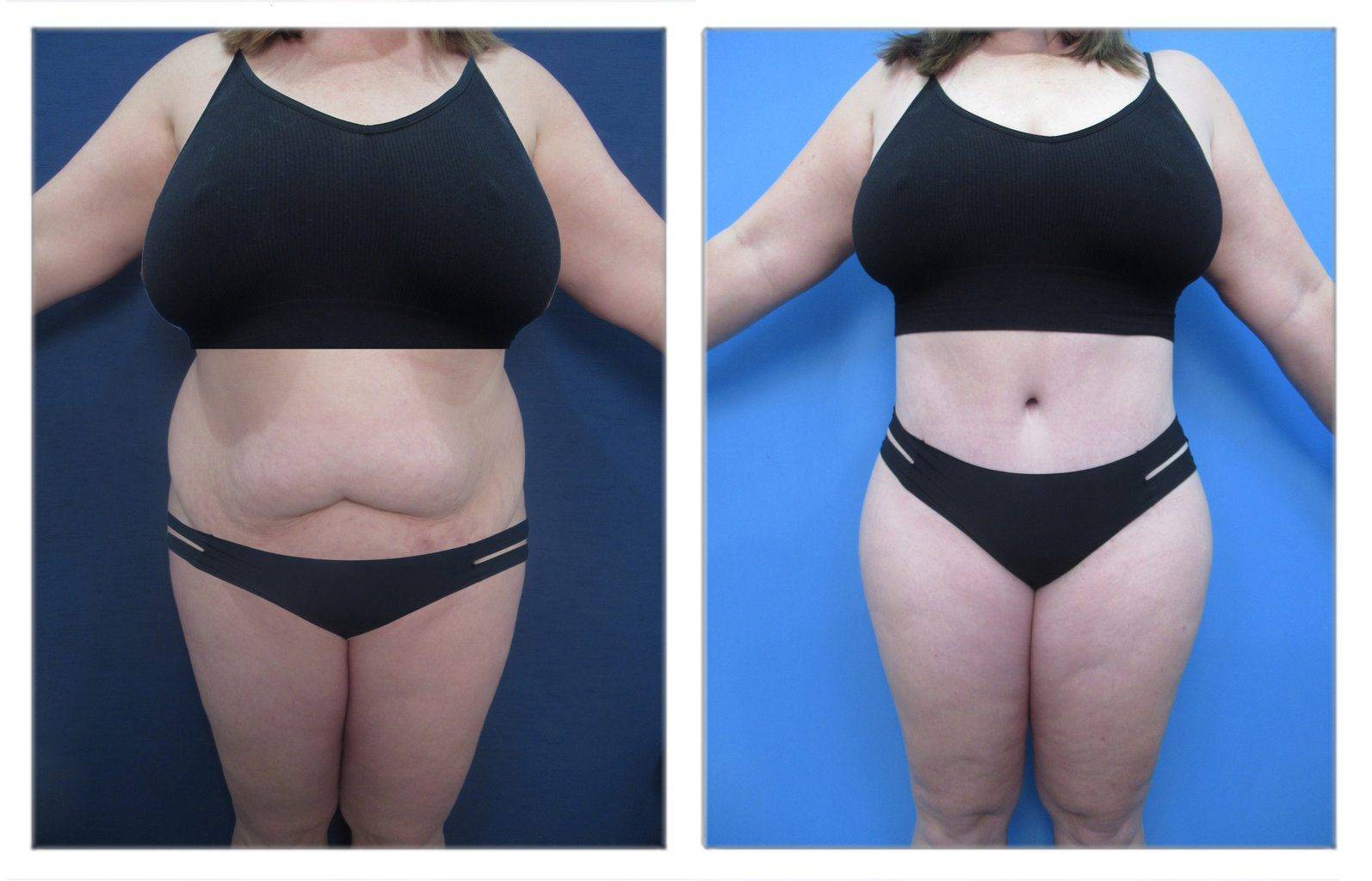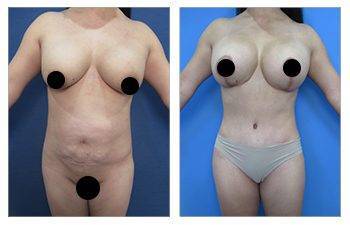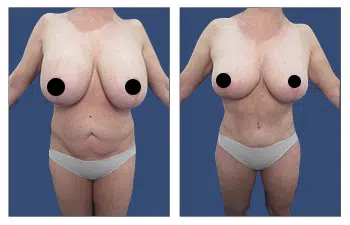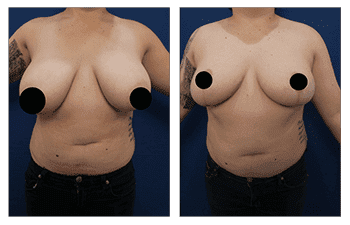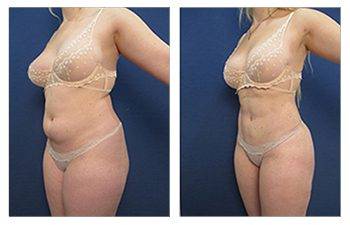Sorry, we couldn't find any posts. Please try a different search.
Introduction: Breast Lift with Implant Augmentation Upper Pole Fullness
If you are looking at your breasts and want a bit more volume on top to achieve a fuller look or have more cleavage, then you may be asking for a breast augmentation either with saline breast implants or silicone breast implants and lift. The combination of these two surgeries allows your surgeon to provide maximum upper pole fullness while also lifting the breast mound and nipples to a more aesthetically pleasing position.
The desire for upper pole fullness arises from wanting more volume and upper chest region. Specifically, the upper pole fullness describes the upper part of your breast mound, the area associated with breast cleavage.A breast lift with implant augmentation maximizes the upper pole fullness of the breasts in two ways. First, your surgeon lifts the breast mounds, and then, your breast implants are inserted, further projecting the breast out.
Benefits of the Breast lift
Breast lift or mastopexy techniques require excision of the lower breast tissue, followed by wrapping the breast tissue around the implant thereby lifting the breast mound to a more desired position. This lifting results in a perkier appearance. With the excision of breast tissue and skin, a breast lift also entails repositioning the nipple to an aesthetically pleasing position on the breast.
A breast lift surgery with implant augmentation also improves the nipple position by placing it strategically at the center of the implant. Appropriate positioning of the nipple is a basic premise for performing a breast lift. A final benefit of a breast lift is to eliminate excess skin. Excess skin becomes evident as you age and following decades of the influence of gravity that pulls down on your breast skin.
Benefits of the implant augmentation
A consequence of lifting the breasts is the loss of breast volume. The loss in breast volume is corrected with the insertion of a breast implant. The breast implant position is determined by the new position of the nipple and areola. The placement of the implant is paramount to ensure that the nipple is centered on the implant thereby ensuring a concentric breast mound.
Upper pole fullness is often lacking even after completion of the breast lift. This is intrinsically due to the loss of breast volume as we age as well as the fact that a breast lift will eliminate breast volume. As such, an implant can provide optimum upper pole fullness often lacking with a breast lift alone.
What is Upper Pole Fullness?
Upper pole fullness refers to the volume and shape of the top half of the breasts, particularly above the nipple and areola. This aspect of breast appearance is commonly associated with youth and attractiveness. Factors such as pregnancy, weight loss, and aging can affect upper pole fullness and the overall appearance of the breasts. During pregnancy, the breasts may increase in size and subsequently lose volume after breastfeeding. Weight loss can also lead to a decrease in breast volume, resulting in a loss of upper pole fullness. Additionally, as a natural part of the aging process, the skin and tissues of the breasts may sag, leading to a loss of upper pole fullness.
For individuals seeking to enhance the upper pole fullness of their breasts, breast augmentation can be an effective solution. This cosmetic procedure involves inserting implants to increase the volume and improve the shape of the breasts. By addressing the specific concerns related to upper pole fullness, breast augmentation can help achieve a more youthful and aesthetically pleasing appearance.
Which breast augmentation options can best improve upper pole fullness?
Breast augmentation options that can best improve upper pole fullness include the placement of implants, the type of fill, implant profile, size, and shape. Submuscular placement of implants, also known as placement under the chest muscle, can help achieve a more natural and smoother upper pole fullness. Cohesive silicone gel fill, often referred to as “gummy bear” implants, provide a more natural feel and can contribute to creating a natural upper pole fullness. High-profile implants, with a greater projection and narrower base, can help create a more dramatic upper pole fullness.
When considering implant size, it is important to choose a proportionate size that complements the patient’s anatomy and desired upper pole fullness. Round implant shapes can also contribute to improved upper pole fullness, as they distribute volume evenly across the breast.
In conclusion, to achieve the desired upper pole fullness during breast augmentation, it is recommended to consider submuscular placement, cohesive silicone gel fill, high-profile implants, proportionate implant size, and round implant shape. These factors can help in creating a natural and aesthetically pleasing upper pole fullness.
Can fat transfer to the breasts improve my breast shape?
If you are considering enhancing the shape of your breasts, you may have heard about fat transfer as a potential option. This procedure involves taking fat from one area of the body and transferring it to the breasts to improve their shape and size. Many women seek this approach as a natural alternative to implants, and it can be particularly helpful for those who are looking to restore volume and contour lost due to aging, weight loss, or pregnancy. In this article, we will explore the potential benefits of fat transfer to the breasts and discuss what you need to know before considering this cosmetic procedure.
How Much Fullness can you get with a Breast Lift Alone?
A breast lift, or mastopexy, is a surgical procedure designed to lift and reshape the breasts for a more youthful and perky appearance. This popular cosmetic surgery can provide significant improvement in breast fullness and shape. However, it’s important to understand the limitations of a breast lift alone in terms of achieving fullness, especially for those looking to increase their breast size. In this article, we will explore the potential for achieving fullness with a breast lift and discuss the complementary options available for those seeking to enhance both the lift and size of their breasts.
1. Breast Lift
A breast lift, also known as mastopexy, is a surgical procedure aimed at lifting and reshaping the breasts, enhancing upper pole fullness, and potentially removing excess skin. The procedure begins with the surgeon making an incision to remove the excess skin and reshape the breast tissue, lifting the breasts to a more youthful position. The nipples and areolas may also be repositioned for a more natural appearance.
In some cases, a breast lift may be done in conjunction with a breast augmentation to achieve more comprehensive results. This may involve the use of implants to increase the size and volume of the breasts, while the lift addresses the sagging and reshaping aspects. By combining these procedures, patients can achieve both a lifted and more youthful breast contour, as well as increased volume and fullness.
Overall, a breast lift aims to improve the appearance of the breasts by lifting and reshaping them, enhancing upper pole fullness, and potentially removing excess skin, ultimately providing a more youthful and rejuvenated look.
2. Breast Lift with Implant
Breast Lift with Implant is a surgical procedure designed to elevate and reshape the breasts while also increasing their size with the use of implants. Candidates for this procedure are typically those who have experienced significant drooping or sagging of the breasts, have lost volume or fullness in the upper pole of the breasts, or wish to enhance the size and shape of their breasts.
By combining a lift with implants, patients can achieve not only a more lifted and youthful appearance but also increased upper pole fullness, giving the breasts a rounder and more aesthetically pleasing shape. The procedure is particularly beneficial for women who have experienced significant changes in their breasts due to pregnancy, breastfeeding, weight loss, or aging.
When considering a breast lift with implants, it’s important to take into account the different grades of drooping or ptosis. Pseudoptosis refers to the appearance of sagging caused by a lack of fullness in the upper portion of the breasts, while true ptosis refers to actual drooping of the breast tissue below the inframammary fold. The appropriate surgical approach will depend on the specific grade of ptosis and the desired outcome for the patient.
Overall, Breast Lift with Implant is a highly effective procedure for restoring a more youthful and aesthetically pleasing appearance to the breasts, addressing both sagging and volume loss to achieve a more balanced and satisfying silhouette.
Conclusion: Breast lift with implant augmentation Upper Pole Fullness
In summary, combining breast lift with implant augmentation is an effective approach to achieve upper pole fullness. A study has shown that this combination results in improved breast projection and fullness in the upper portion of the breast. This is particularly beneficial for women who have experienced sagging and loss of volume in their breasts.
The implications of this approach are significant for those seeking a more youthful and lifted appearance. The combination of breast lift and implant augmentation can provide a more comprehensive solution to address both ptosis and loss of volume. This procedure offers a more natural-looking and fuller breast shape, resulting in improved self-esteem and body confidence for the patient.
However, it is important to consider the potential risks associated with this approach. Complications such as implant rupture, capsular contracture, and changes in nipple sensation may occur. In addition, the need for additional future surgeries for maintenance or correction should be taken into account.
In conclusion, combining breast lift with implant augmentation can effectively achieve upper pole fullness and provide a more comprehensive solution for breast ptosis and volume loss. While the benefits are significant, it is essential to weigh the potential risks and consider individual factors before opting for this approach.

